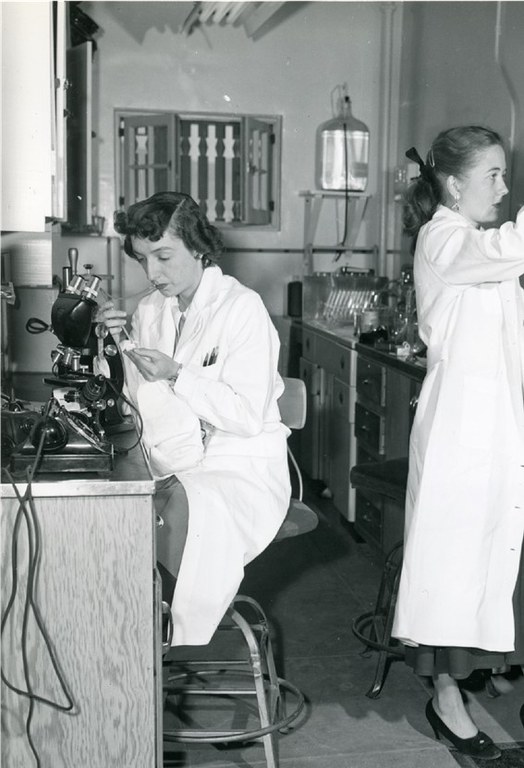Nuclear Communities of the Southwest

Sandia National Laboratories employees, 1952,
Gelatin silver print, Albuquerque Museum,
gift of John Airy, PA1982.181.007
The Albuquerque Museum presented Nuclear Communities of the Southwest on view from March 23, 2024 to September 15, 2024. This exhibition featured videos, photographs, and memorabilia from Sandia and Los Alamos National Laboratories as well as Kirtland Air Force Base. These historical objects were placed in conversation with artists’ responses to New Mexico’s involvement in the development of nuclear technologies. Special attention was paid to the Tularosa Basin downwinders, a community of people unknowingly exposed to the Trinity Test plutonium bomb explosion on July 16, 1945.
Popular culture often celebrates a singular figure, an iconic story, or a heroic ending. Nuclear Communities of New Mexico challenges this narrative by telling the stories of the people who were impacted by and in some cases who had a hand in creating nuclear New Mexico.
Drawing from the museum’s permanent collection, this exhibition presented a definition of nuclear beyond the scientific. The ‘nuclear family’ consists of a mom, dad, and their children in a single-family household. While the ‘nuclear age’ defines a new age in science, it also marks a new era in history. The laboratories successfully promoted the idea of the nuclear community to recruit people for work. Primary sources, like promotional materials and government documents, are included in the exhibition and allow for a deeper look into how communities were created, which communities were ignored, and how communities connected to the fallout of the nuclear world in New Mexico have continued to survive.
“New Mexico has played a significant role in U.S. history with regards to the development of what is now referred to as the nuclear age,” said Andrew Connors, Albuquerque Museum Director. “To be able to tap into our permanent collection and work with affected communities to bring a different dialogue to a part of history that has been in the public eye of late is important to the Museum’s mission.”
New Mexico’s role as the test site and development of the nuclear bomb has been viewed in popular culture through the lens of a few isolated figures and events. The stories and legacies across the state and Southwest region, however, exist in a much broader context. This exhibition raises important questions: How do nuclear institutions impact communities? What stories are told by and for the people connected with the labs? How do artworks reveal the consequences of scientific innovation? Featuring the work of artists like Nina Elder, Luis Jiménez, Patrick Nagatani, and Eric J. García, visitors were invited to engage with a broader view of the nuclear world and the land and people it affects, especially in New Mexico.
